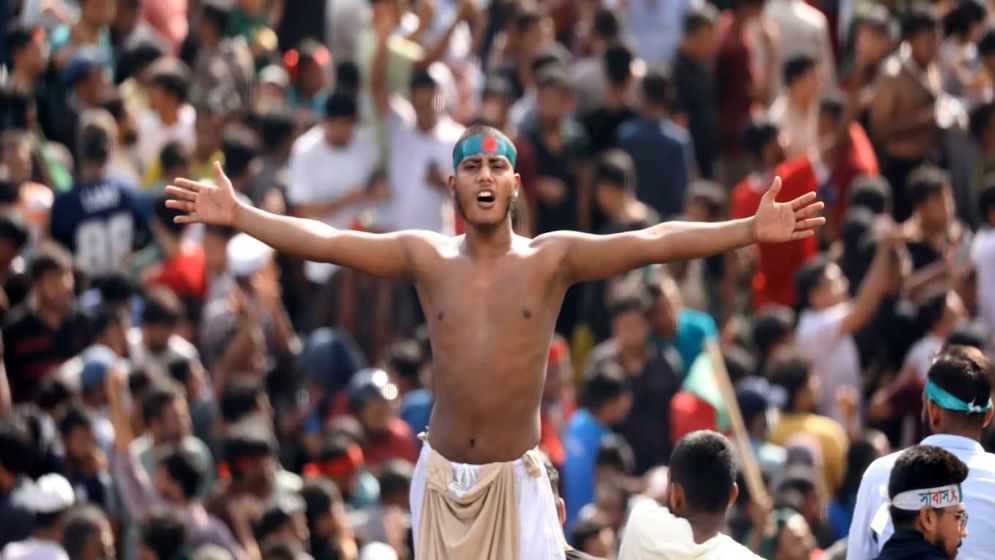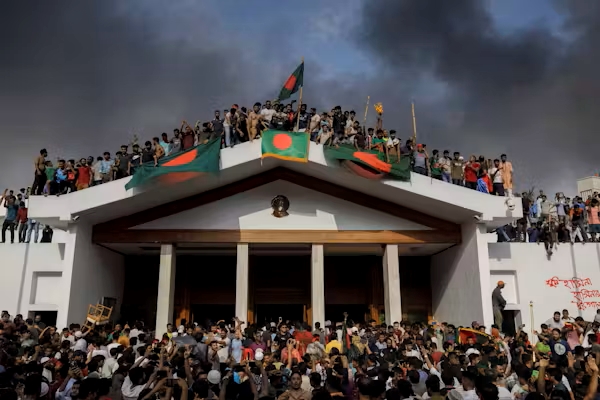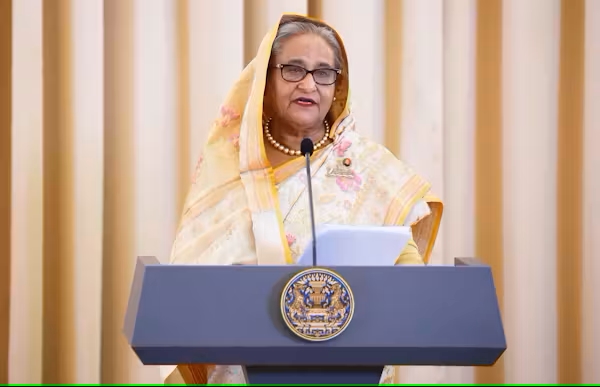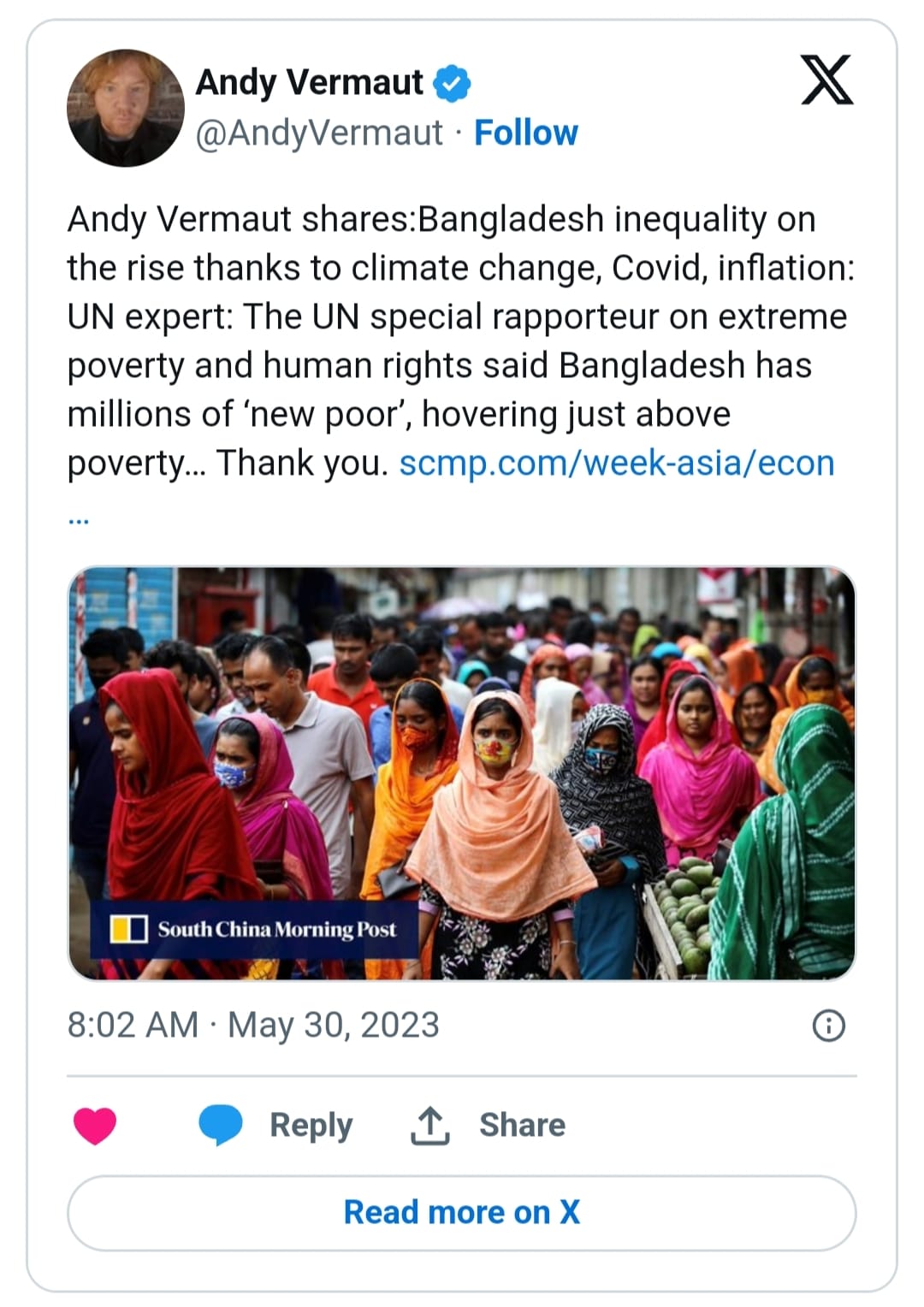Young people brought down Bangladesh’s repressive leader. Will they now be empowered to lead real change?
Intifar Chowdhury
Publish: 10 Aug 2024, 09:00 PM

MONIRUL ALAM/EPA
“Inni, we are independent!” my 26-year-old cousin chanted from Shahbagh, a neighbourhood in Bangladesh’s capital Dhaka, as millions joined a major protest march on Monday to the country’s Parliament House.
Soon after, social media was flooded with news of “a new independence” – a free Bangladesh reborn after the autocratic leader of over 15 years, Prime Minister Sheikh Hasina, fled the country in the face of defiant public demand for her resignation.
It was the startling culmination of weeks of unrest that resulted in some 300 deaths and thousands of arrests.
Now, the young protesters who instigated the protests have a real opportunity to contribute to the political discourse in a previously discriminatory system of government. Will the interim government listen – and bring real change to the country?

What’s been happening in recent weeks?
The student protests erupted last month over a quota system that reserved 30% of government jobs for Bangladesh’s 1971 liberation war veterans and their relatives. The students demanded a merit-based system, deeming the current one unfair and biased.
As the protests grew, Bangladesh’s faux democratic regime totally broke down. The government cut mobile internet, imposed a nationwide shoot-on-sight curfew, and deployed the army and police to the streets.
The government’s violent response quickly transformed the demonstrations into a full-fledged “people’s uprising” aimed at toppling Hasina and her Awami League party.
After days of intense clashes between student protesters, police and ruling party activists, the Supreme Court reduced the quota to just 5% of jobs for veterans and their relatives. Despite this concession, protesters continued to demand accountability for those killed in the weeks of unrest.
The government tried to deflect blame, claiming the demand for Hasina’s resignation had been orchestrated by the opposition Bangladesh Nationalist Party (BNP) and the now-banned Jamaat-e-Islami party.
The prime minister labelled the protesters as criminals to be dealt with harshly, leading to a severe erosion of political trust. When Hasina offered to meet with student leaders on Saturday, a coordinator fervently refused.
Sunday marked one of the deadliest days in Bangladesh’s history of civil unrest, with at least 98 people killed and hundreds injured.
Anti-government sentiment spread rapidly, fuelled by accusations the government was intimidating protesters, denying medical care to the injured and arresting thousands for exercising their democratic rights.
As the unrest grew, Hasina’s grip on power weakened until she was finally forced to flee.

Deep-seated inequality and anger
While the student protests initially targeted the quota system, broader public discontent quickly emerged. Bangladeshis were angry over the repressive political climate, the weakening economy and the government’s inability to tackle pressing issues, such as inequality, youth unemployment and high inflation.
This discontent has come despite the fact Bangladesh has achieved significant economic success since Hasina came back into office in 2009, largely fuelled by the garment industry.
Bangladesh has become one of the fastest-growing economies in the region. Per capita income has tripled in the last decade and over 25 million people have been lifted out of poverty in the past 20 years.
However, the economic fruits have been unevenly distributed, favouring the rich, who tend to support the Awami League. The wealthiest 10% of the population control 41% of the nation’s income, while the bottom 10% receive just 1.3%.
 https://x.com/AndyVermaut/status/1663365136940433409?t=TYP45dUHyhVbqBudi4pLgQ&s=19
https://x.com/AndyVermaut/status/1663365136940433409?t=TYP45dUHyhVbqBudi4pLgQ&s=19
The country’s economic success failed to meet the aspirations of the younger generation, in particular. By 2023, 40% of those aged 15–29 were classified as “NEET” – which means “not in employment, education or training”. University graduates have faced higher unemployment rates than their less-educated peers.
Rising inflation, reaching nearly 10%, and increased living expenses have compounded these hardships. Utility costs soared as the government raised electricity and gas prices three times in a single year.
The root causes of the quota protests, therefore, ran deep. And this anger was especially pronounced for the disenchanted and politically marginalised youth. Their demands were clear: they wanted fair elections, government accountability and the restoration of democratic norms.
Bottom-up transition to democracy
In all senses, Bangladesh has not been a democracy since its 1971 independence war against Pakistan. The country has been plagued by corruption, the suppression of free speech and the press, and flagrant repression of the opposition. This has included politically motivated arrests, disappearances and extrajudicial killings.
Elections have also not been free and fair. The highly controversial election in January that returned Hasina to power for a fourth consecutive term, for instance, was boycotted by her main opponents. Many of their leaders were jailed.
But the recent protests have offered hope of a bottom-up transition to democracy.
Young people have played a pivotal role in bringing down Hasina’s government through their sheer numbers, as well as their spirit, resilience, defiance and solidarity. They were tech-savvy, too, ingeniously navigating the internet and mobile data crackdowns to mobilise protesters, both at home and abroad.
However, a true democratic transition in Bangladesh now requires competitive elections and a new form of governance. While the army has promised an all-party inclusive interim government, it remains unclear if and how youth leaders will be invited to the decision-making table.
Despite being highly educated and committed to democracy, young Bangladeshis – especially young women – have been marginalised by traditional, hierarchical and patriarchal political structures. In 2022, for example, only 0.29% of parliamentarians were under 30, and 5.71% were under 40.
The current power vacuum presents a significant opportunity to politically empower the country’s youth. The underlying economic and social ills that led to the protests are largely youth issues. Without adequate political representation and participation, there is a risk of further marginalisation, increased distrust in the political process and potential democratic collapse.
While the road ahead is fraught with challenges, Bangladesh’s youth have demonstrated their readiness to fight for their rights and their future.
____
This article was originally published in The Conversation and is republished under the Creative Commons License.
